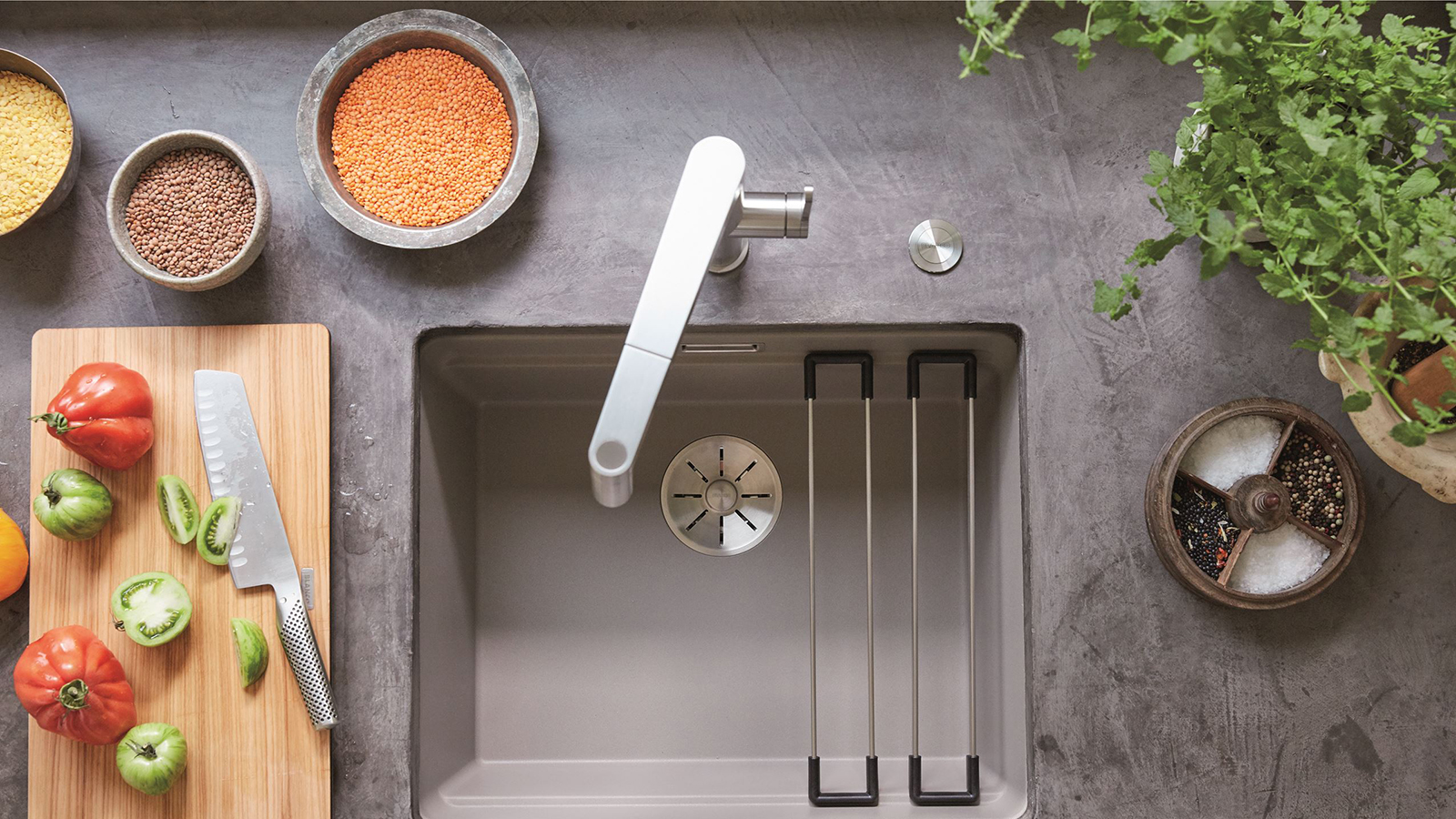John Robinson of BLANCO UK explains all that the retailer or installer needs to know about undermount sinks.

When deciding what sink type is best for a design scheme, it’s best to start by considering the kitchen style, the worktop material, the profile of the homeowner/s and any constraints which may demand a certain installation method.
Along with the undermount method, where the sink is attached beneath the worktop, sinks can be installed from above with the edge placed on top of the worktop. With a farmhouse style sink, it can be fitted in two different ways. The inset option is where the worktop butts up to the outside of the bowl; the undermount option is where the worktop sits over part of the bowl rim on three sides.
Sponsored Video
An undermount sink is an understated design feature; it can either match the worktop or create a contrast. With no surface profile, it shows off the choice of solid surface beautifully. It gives the user more space on the worktop as the drainer can be integrated into the work surface or a separate drainer can be added or hidden away as required. The sink rim does not result in any protruding edges so it’s really easy to clean and swipe surface debris into the bowl in one hygienic motion.
Finally, an undermount sink should be used with worktops made of natural stone, glass or composite materials; essentially, dense, continuous materials with the properties to resist water ingress.
Charley Jones, Showroom Manager at Schmidt Wimbledon, a BLANCO retailer, explains: “We find BLANCO undermount sinks incredibly easy to install making our job hassle-free. As well as the wide range of styles our customers have to choose from, there is also the stunning range of SILGRANIT® colours too – we only ever use BLANCO sinks for any project we undertake; they sell themselves! When we install a BLANCO sink into a home, it’s always a smooth process due to the product coming with everything you need to install it – this saves massively on ordering all the parts separately.”



